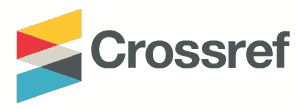Analysis of an Integrated QEEG-Neurofeedback System Utilizing Active Stimuli for Non-Pharmacological Intervention in Enhancing Neurobehavioral Function
DOI:
https://doi.org/10.62146/ijecbe.v2i2.47Keywords:
Neurobehavior, Neurofeedback, Quantitative EEG, Stochastic ResonanceAbstract
Quantitative Electroencephalogram (QEEG) and Neurofeedback (NF) are employed in the diagnosis and treatment of neurobehavioral deficits associated with various clinical conditions. These approaches enable the exploration of EEG usage within the context of neurobehavioral electrophysiology. This study aims to elucidate the fundamental evidence supporting NF and to outline strategies for its further development and application in ameliorating neurobehavioral deficits. Numerous research studies have demonstrated the efficacy of NF in enhancing neurobehavioral functions, including attention, language, memory, visuospatial abilities, and executive function. This study intends to develop an NF system that includes the establishment of a robust approach to QEEG transformation and database. The closed-loop QEEG-NF system under development incorporates active visual and auditory stimuli that leverage stochastic phenomena. The efficacy of the QEEG NF treatment was confirmed with a statistically significant increase in alpha brain wave percentages post-treatment (p = 0.018), indicating that the system effectively enhances alpha brain wave production.
References
L. F. Haas. “Hans Berger (1873-1941), Richard Caton (1842-1926), and electroencephalography”. In: Journal of Neurology, Neurosurgery & Psychiatry 74.1 (2003), p. 9. DOI: 10.1136/jnnp.74.1.9.
D. A. Kaiser. “Basic Principles of Quantitative EEG”. In: Journal of Adult Development 12 (2005), pp. 99–104.
B. P. Shelley and M. R. Trimble. “"All That Spikes is Not Fits," Mistaking the Woods for the Trees: the Interictal Spikes - an "EEG Chameleon" in the Interface Disorders of Brain and Mind: a Critical Review”. In: Clinical EEG and Neuroscience 40.4 (2009), pp. 245–261.
D. C. Hammond. “Neurofeedback for the Enhancement of Athletic Performance and Physical Balance”. In: Journal of the American Board of Sport Psychology 1 (2007), pp. 1–9.
T. Egner and J. H. Gruzelier. “Ecological validity of neurofeedback: modulation of slow wave EEG enhances musical performance”. In: Cognitive Neuroscience and Neuropsychology 14.9 (2003), pp. 1221–1224.
J. H. Gruzelier. “EEG-neurofeedback for optimising performance. II: Creativity, the performing arts and ecological validity”. In: Neuroscience and Biobehavioral Reviews 44 (2014), pp. 142–158.
C. Imperatori et al. “Coping food craving with neurofeedback: Evaluation of the usefulness of alpha/theta training in a non-clinical sample”. In: International Journal of Psychophysiology 112 (2017), pp. 89–97.
T. Ros et al. “Optimizing microsurgical skills with EEG neurofeedback”. In: BMC Neuroscience 10 (2009), pp. 87–96.
J. Walker. “A Neurologist’s Advice for Mental Health Professionals on the Use of QEEG and Neurofeedback”. In: Journal of Neurotherapy 8.2 (2004), pp. 97–103.
J. A. Pineda, E. V. C. Friedrich, and K. LaMarca. “Neurorehabilitation of social dysfunctions: a model-based neurofeedback approach for low and high-functioning autism”. In: Frontiers in Neuroengineering 7.29 (2014), pp. 1–18.
B. A. Van der Kolk et al. “A Randomized Controlled Study of Neurofeedback for Chronic PTSD”. In: PLOSone (2016), pp. 1–18.
M. Ordikhani-Seyedlar et al. “Neurofeedback Therapy for Enhancing Visual Attention: State-of- the-Art and Challenges”. In: Frontiers in Aging Neuroscience 10.352 (2016), pp. 1–15.
E. J. Lee and C. H. Jung. “Additive effects of neurofeedback on the treatment of ADHD: A randomized controlled study”. In: Asian Journal of Psychiatry 25 (2017), pp. 16–21.
H. Gevensleben et al. “Is neurofeedback an efficacious treatment for ADHD? A randomized controlled clinical trial”. In: The Journal of Child Physiology and Psychiatry 50.7 (2009), pp. 780–789.
J. Reis et al. “An Alpha and Theta Intensive and Short Neurofeedback Protocol for Healthy Aging Working-Memory Training”. In: Frontiers in Aging Neuroscience 8.157 (2016), pp. 1–11.
T. Ghosh, M. Jahan, and A. R. Singh. “The efficacy of electroencephalogram neurofeedback training in cognition, anxiety, and depression in alcohol dependence syndrome: A case study”. In: Industrial Psychiatry Journal 23.2 (2014), pp. 166–170.
S. M. H. Hosseini et al. “Task-based neurofeedback training: A novel approach toward training executive functions”. In: Neuroimage 134 (2016), pp. 153–159.
A. Bluschke et al. “The neuronal mechanisms underlying improvement of impulsivity in ADHD by theta/beta neurofeedback”. In: Scientific Report (2016). DOI: 10.1038/srep31178.
T. Ros et al. “Endogenous control of waking brain rhythms induces neuroplasticity in humans”. In: European Journal of Neuroscience 31.4 (2010), pp. 1–9.
G. Deco, E. T. Rolls, and R. Romo. “Stochastic dynamics as a principle of brain function”. In: Progress in Neurobiology 88.1 (2009), pp. 1–16.
G. Deco and E. T. Rolls. “Decision-making and Weber’s law: a neurophysiological model”. In: European Journal of Neuroscience 24.3 (2006), pp. 901–916.
L. Gammaitoni et al. “Stochastic resonance”. In: Reviews of Modern Physics 70.1 (1998), pp. 223–287.
S. Baijot et al. “Neuropsychological and neurophysiological benefits from white noise in children with and without ADHD”. In: Behavioral and Brain Functions 12.11 (2016). DOI: 10.1186/s12993-016-0095-y.
M. D. McDonnell and L. M. Ward. “The benefits of noise in neural systems: bridging theory and experiment”. In: Nature Reviews Neuroscience 12 (2011), pp. 415–426. DOI: 10.1038/nrn3061.
L. Gammaitoni et al. “Stochastic Resonance”. In: Reviews of Modern Physics 70.1 (1998), pp. 223–287.
F. Tanaka, A. Matsubara, and S. Nishifuji. “Evidence of stochastic resonance of auditory steady-state response in electroencephalogram for brain machine interface”. In: 2015 IEEE 4th Global Conference on Consumer Electronics (GCCE). 2015, pp. 195–199. DOI: 10.1109/GCCE.2015.7398638.
Downloads
Published
How to Cite
Issue
Section
License
Copyright (c) 2024 International Journal of Electrical, Computer, and Biomedical Engineering

This work is licensed under a Creative Commons Attribution 4.0 International License.






